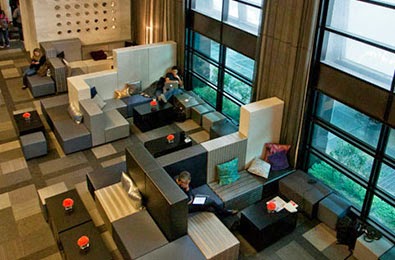A Window Even Smarter Than Your Phone?
Have you ever been in a room where the light and heat coming through the window made you uncomfortable? There’s a cool clean technology that is designed to fix that.
Milpitas-based View Incorporated has developed a lower cost dynamic glass technology that detects the amount of sunlight passing through a window and—when the window detects too much light—automatically tints itself to reduce unwanted glare.
The innovative technology was funded in part by the California Energy Commission’s Public Interest Energy Research (PIER) Program and is now commercially available.
The glass also reduces energy cost by enabling greater temperature control and blocking excessive heat, which mitigates the need for air conditioning on hot days.
In fact, a study from the Lawrence Berkeley National Laboratory shows that smart windows could reduce peak cooling loads by at least 19 percent and lighting loads by 48 percent. In existing commercial buildings, assuming a 10 percent market penetration, this technology could save California ratepayers more than 500 gigawatts a year, which translates to more than $65 million annually in lighting energy costs alone.
This technology has been installed in buildings throughout California, including the W Hotel in San Francisco and the Hilton Universal City in Los Angeles.
It is the latest example of how the Energy Commission is funding entrepreneurs and bringing technologies from “lab to life.”
Milpitas-based View Incorporated has developed a lower cost dynamic glass technology that detects the amount of sunlight passing through a window and—when the window detects too much light—automatically tints itself to reduce unwanted glare.
 |
| 32,000 sf office building on Indio Way in Sunnyvale, CA |
The glass also reduces energy cost by enabling greater temperature control and blocking excessive heat, which mitigates the need for air conditioning on hot days.
In fact, a study from the Lawrence Berkeley National Laboratory shows that smart windows could reduce peak cooling loads by at least 19 percent and lighting loads by 48 percent. In existing commercial buildings, assuming a 10 percent market penetration, this technology could save California ratepayers more than 500 gigawatts a year, which translates to more than $65 million annually in lighting energy costs alone.
 |
| W Hotel lounge area, San Francisco, California |
It is the latest example of how the Energy Commission is funding entrepreneurs and bringing technologies from “lab to life.”


